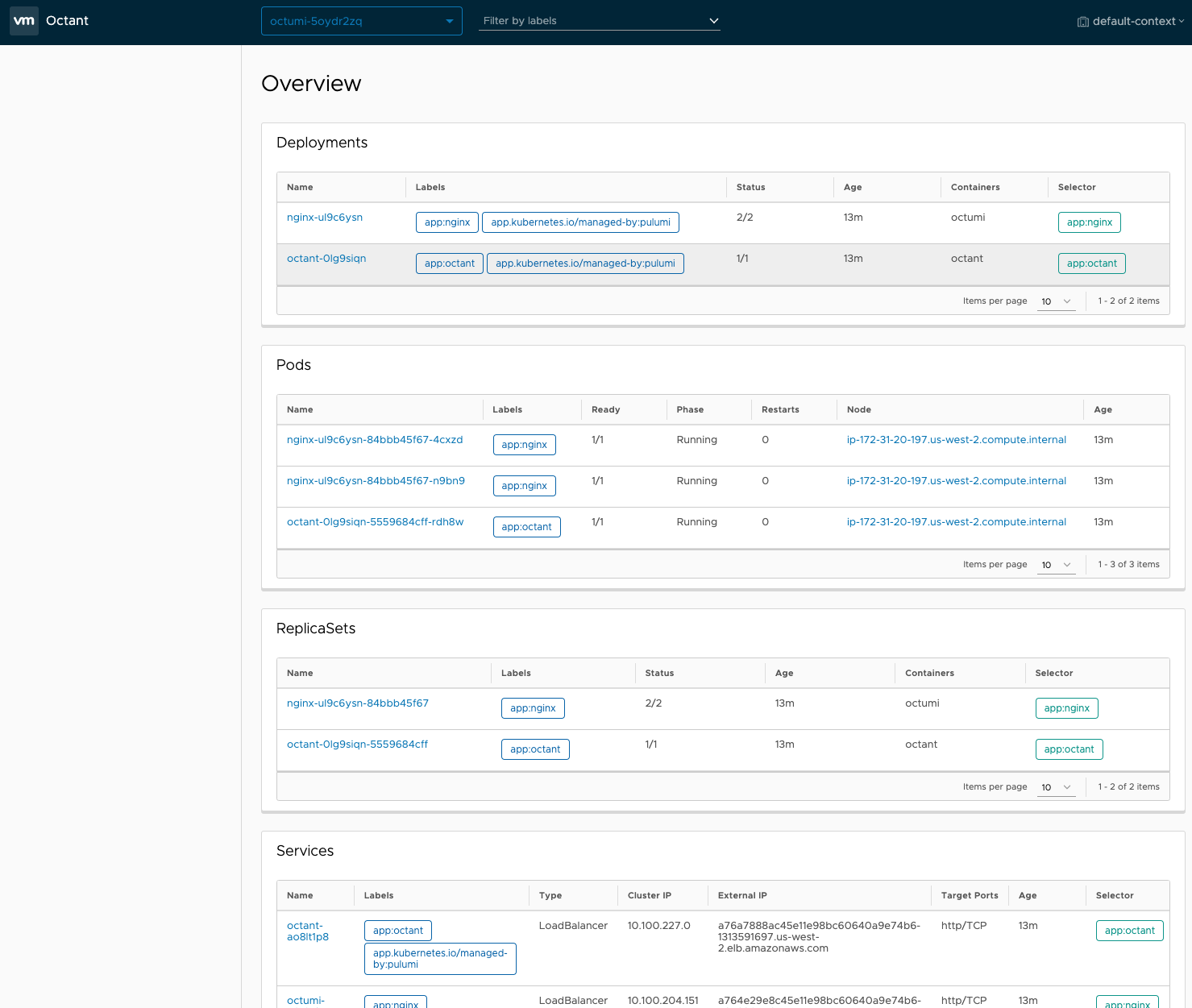Deploy VMware Octant on an Amazon EKS cluster using Pulumi.
- Install Pulumi.
- Install Node.js.
- Install a package manager for Node.js, such as NPM or Yarn.
- Configure AWS Credentials.
- Install AWS IAM Authenticator for Kubernetes.
- Install
kubectl.
-
Clone the repo:
git clone https://github.com/metral/octumi cd octumi -
Install the dependencies.
npm install
-
Create a new Pulumi stack named
dev.pulumi stack init dev
-
Set the Pulumi configuration variables for the project.
Note: Select any valid EKS region.
pulumi config set aws:region us-west-2
Create the cluster and deploy the workload by running an update:
pulumi upThe update takes ~15 minutes.
Once the update is complete, verify the cluster, node groups, and Pods are up and running:
pulumi stack output kubeconfig > kubeconfig.json && export KUBECONFIG=$PWD/kubeconfig.json
kubectl get nodes -o wide --show-labels
kubectl get pods --all-namespaces -o wide --show-labelsVisit the URL's stored in the output for NGINX and Octant:
pulumi stack output nginxUrl
pulumi stack output octantUrlRun the following command to tear down the resources that are part of our stack.
-
Run
pulumi destroyto tear down all resources. You'll be prompted to make sure you really want to delete these resources.pulumi destroy
-
To delete the stack, run the following command.
pulumi stack rm
Note: This command deletes all deployment history from the Pulumi Console and cannot be undone.
